1. Hsu HW, Bondy SC, Kitazawa M. 2018; Environmental and dietary exposure to copper and its cellular mechanisms linking to Alzheimer's disease. Toxicol Sci. 163:338–45. DOI:
10.1093/toxsci/kfy025. PMID:
29409005. PMCID:
PMC5974786.

2. Liu J, Lewis G. 2014; Environmental toxicity and poor cognitive outcomes in children and adults. J Environ Health. 76:130–8. PMID:
24645424. PMCID:
PMC4247328.
3. Racette BA, McGee-Minnich L, Moerlein SM, Mink JW, Videen TO, Perlmutter JS. 2001; Welding-related parkinsonism: clinical features, treatment, and pathophysiology. Neurology. 56:8–13. DOI:
10.1212/WNL.56.1.8. PMID:
11148228.

4. Fafure AA, Adekeye AO, Enye LA, Tijani AA, Ajao MM, Edem EE. 2018; Ficus exasperata vahl improves manganese-induced neurotoxicity and motor dysfunction in mice. Anat J Afr. 7:1206–19.

5. Afeseh Ngwa H, Kanthasamy A, Anantharam V, Song C, Witte T, Houk R, Kanthasamy AG. 2009; Vanadium induces dopaminergic neurotoxicity via protein kinase Cdelta dependent oxidative signaling mechanisms: relevance to etiopathogenesis of Parkinson's disease. Toxicol Appl Pharmacol. 240:273–85. DOI:
10.1016/j.taap.2009.07.025. PMID:
19646462. PMCID:
PMC2753722.

7. Amorim FA, Welz B, Costa AC, Lepri FG, Vale MG, Ferreira SL. 2007; Determination of vanadium in petroleum and petroleum products using atomic spectrometric techniques. Talanta. 72:349–59. DOI:
10.1016/j.talanta.2006.12.015. PMID:
19071624.

8. Olopade JO, Connor JR. 2011; Vanadium and neurotoxicity: a review. Curr Top Toxicol. 7:33–9.
9. Fortoul TI, Rodriguez-Lara V, González-Villalva A, Rojas-Lemus M, Cano-Gutiérrez G, Ustarroz-Cano M, Colín-Barenque L, Bizarro-Nevares P, García-Pealez I, Montaño LF, Jimenez-Martinez RS, Lopez-Valdez N, Ruiz-Guerrero ML, Meléndez-García NA, García-Ibarra FA, Martínez-Baez V, Zapata Alfaro D, Muñiz-Rivera-Cambas A, López-Zepeda LS, Quezada-Maldonado EM, Cervantes-Yépez S. 2014; Inhalation of vanadium pentoxide and its toxic effects in a mouse model. Inorganica Chim Acta. 420:8–15. DOI:
10.1016/j.ica.2014.03.027.

10. Roy A, Jauhari N, Bharadvaja N. Akhtar MS, Swamy MK, editors. 2018. Medicinal plants as a potential source of chemopreventive agents. Anticancer plants: natural products and biotechnological implements. Springer;Singapore: p. 109. DOI:
10.1007/978-981-10-8064-7_6.

11. Odiba PA, Yusuf D, Ali E, Yusuf MI, John E. 2012; Effect of aqueous extract of Ficus exasperata leaf on the body weight and haematological parameters of Wistar rats. J Appl Sci Environ. 3:80–3.
12. Ahmed F, Toume K, Ohtsuki T, Rahman M, Sadhu SK, Ishibashi M. 2011; Cryptolepine, isolated from Sida acuta, sensitizes human gastric adenocarcinoma cells to TRAIL-induced apoptosis. Phytother Res. 25:147–50. DOI:
10.1002/ptr.3219. PMID:
20623717.

13. Ijeh , Ukweni AI. 2007; Acute effect of administration of ethanol extracts of Ficus exasperata vahl on kidney function in albino rats. II. J Med Plant Res. 1:27–9.
14. Akah PA, Orisakwe OE, Gamaniel KS, Shittu A. 1998; Evaluation of Nigerian traditional medicines: II. effects of some Nigerian folk remedies on peptic ulcer. J Ethnopharmacol. 62:123–7. DOI:
10.1016/S0378-8741(98)00060-9. PMID:
9741884.

15. Ogunleye RF. 2011; Effectiveness of the leaf powder of Ficus exasperata Vahl. (Moraceae) in suppressing thepopulation of two major storage insect pests. Cont J Biol Sci. 4:6–11.
16. Ayinde BA, Omogbai EK, Amaechina FC. 2007; Pharmacognosy and hypotensive evaluation of Ficus exasperata Vahl (Moraceae) leaf. Acta Pol Pharm. 64:543–6. PMID:
18323249.
17. Devbhuti D, Gupta JK, Devbhuti P, Bose A. 2009; Phytochemical and acute toxicity study on Tinospora tomentosa Miers. Acta Pol Pharm. 66:89–92.
18. Tijjani MB, Bello IA, Aliyu AB, Olurishe T, Maidawa SM, Habila JD, Balogun EO. 2009; Phytochemical and antibacterial studies of root extract of Cochlospermum tinctorium A. Rich. (Cochlospermaceae). Res J Med Plant. 3:16–22. DOI:
10.3923/rjmp.2009.16.22.

19. Sparg SG, Light ME, van Staden J. 2004; Biological activities and distribution of plant saponins. J Ethnopharmacol. 94:219–43. DOI:
10.1016/j.jep.2004.05.016. PMID:
15325725.

21. Adekeye AO, Adumah C, Fafure AA, Ajao M, Sabiu S, Shallie P, Adefule AK. 2018; Evaluation of the effects of gutenbergia nigritana leaves extract on cerebellum of adult mice and its implication on manganese toxicity. World J Pharm Pharm Sci. 7:55–68. DOI:
10.1016/j.ibror.2019.09.046.
22. Mustapha O, Oke B, Offen N, Sirén AL, Olopade J. 2014; Neurobehavioral and cytotoxic effects of vanadium during oligodendrocyte maturation: a protective role for erythropoietin. Environ Toxicol Pharmacol. 38:98–111. DOI:
10.1016/j.etap.2014.05.001. PMID:
24927405.

23. Folarin O, Olopade F, Onwuka S, Olopade J. 2016; Memory deficit recovery after chronic vanadium exposure in mice. Oxid Med Cell Longev. 2016:4860582. DOI:
10.1155/2016/4860582. PMID:
26962395. PMCID:
PMC4745327.

24. Carter RJ, Morton J, Dunnett SB. 2001; Motor coordination and balance in rodents. Curr Protoc Neurosci. Chapter 8:Unit 8. 12. DOI:
10.1002/0471142301.ns0812s15. PMID:
18428540.

25. Zwolak I. 2014; Vanadium carcinogenic, immunotoxic and neurotoxic effects: a review of in vitro studies. Toxicol Mech Methods. 24:1–12. DOI:
10.3109/15376516.2013.843110. PMID:
24147425.
26. Folarin OR, Snyder AM, Peters DG, Olopade F, Connor JR, Olopade JO. 2017; Brain metal distribution and neuro-inflammatory profiles after chronic vanadium administration and withdrawal in mice. Front Neuroanat. 11:58. DOI:
10.3389/fnana.2017.00058. PMID:
28790895. PMCID:
PMC5524677.

27. Igado OO, Olopade JO, Adesida A, Aina OO, Farombi EO. 2012; Morphological and biochemical investigation into the possible neuroprotective effects of kolaviron (Garcinia kola bioflavonoid) on the brains of rats exposed to vanadium. Drug Chem Toxicol. 35:371–80. DOI:
10.3109/01480545.2011.630005. PMID:
22288905.
29. Dexter DT, Carter CJ, Wells FR, Javoy-Agid F, Agid Y, Lees A, Jenner P, Marsden CD. 1989; Basal lipid peroxidation in substantia nigra is increased in Parkinson's disease. J Neurochem. 52:381–9. DOI:
10.1111/j.1471-4159.1989.tb09133.x. PMID:
2911023.

31. Shi X, Dalal NS. 1993; Vanadate-mediated hydroxyl radical generation from superoxide radical in the presence of NADH: Haber-Weiss vs Fenton mechanism. Arch Biochem Biophys. 307:336–41. DOI:
10.1006/abbi.1993.1597. PMID:
8274019.

32. Lee S, Li J, Zhou X, Yin J, Yoon J. 2018; Recent progress on the development of glutathione (GSH) selective fluorescent and colorimetric probes. Coord Chem Rev. 366:29–68. DOI:
10.1016/j.ccr.2018.03.021.

33. Monleau M, De Méo M, Frelon S, Paquet F, Donnadieu-Claraz M, Duménil G, Chazel V. 2006; Distribution and genotoxic effects after successive exposure to different uranium oxide particles inhaled by rats. Inhal Toxicol. 18:885–94. DOI:
10.1080/08958370600822524. PMID:
16864406.

34. Ooms M, Celen S, De Hoogt R, Lenaerts I, Liebregts J, Vanhoof G, Langlois X, Postnov A, Koole M, Verbruggen A, Van Laere K, Bormans G. 2017; Striatal phosphodiesterase 10A availability is altered secondary to chronic changes in dopamine neurotransmission. EJNMMI Radiopharm Chem. 1:3. DOI:
10.1186/s41181-016-0005-5. PMID:
29564380. PMCID:
PMC5843803.

35. Schmitt KC, Reith ME. 2010; Regulation of the dopamine transporter: aspects relevant to psychostimulant drugs of abuse. Ann N Y Acad Sci. 1187:316–40. DOI:
10.1111/j.1749-6632.2009.05148.x. PMID:
20201860.
36. Chinyere NH. 2012. Studies on anti-inflammatory properties of the leaf extracts of ficus exasperata Vahl (Moraceae) [Doctoral dissertation]. University of Nigeria Nsukka;Nsukka:
37. Miller GW, Staley JK, Heilman CJ, Perez JT, Mash DC, Rye DB, Levey AI. 1997; Immunochemical analysis of dopamine transporter protein in Parkinson's disease. Ann Neurol. 41:530–9. DOI:
10.1002/ana.410410417. PMID:
9124811.

38. Fang SC, Hsu CL, Yen GC. 2008; Anti-inflammatory effects of phenolic compounds isolated from the fruits of Artocarpus heterophyllus. J Agric Food Chem. 56:4463–8. DOI:
10.1021/jf800444g. PMID:
18500810.
39. Heller JP, Rusakov DA. 2015; Morphological plasticity of astroglia: understanding synaptic microenvironment. Glia. 63:2133–51. DOI:
10.1002/glia.22821. PMID:
25782611. PMCID:
PMC4737250.

40. Garcia GB, Biancardi ME, Quiroga AD. 2005; Vanadium (V)-induced neurotoxicity in the rat central nervous system: a histo-immunohistochemical study. Drug Chem Toxicol. 28:329–44. DOI:
10.1081/DCT-200064496. PMID:
16051558.

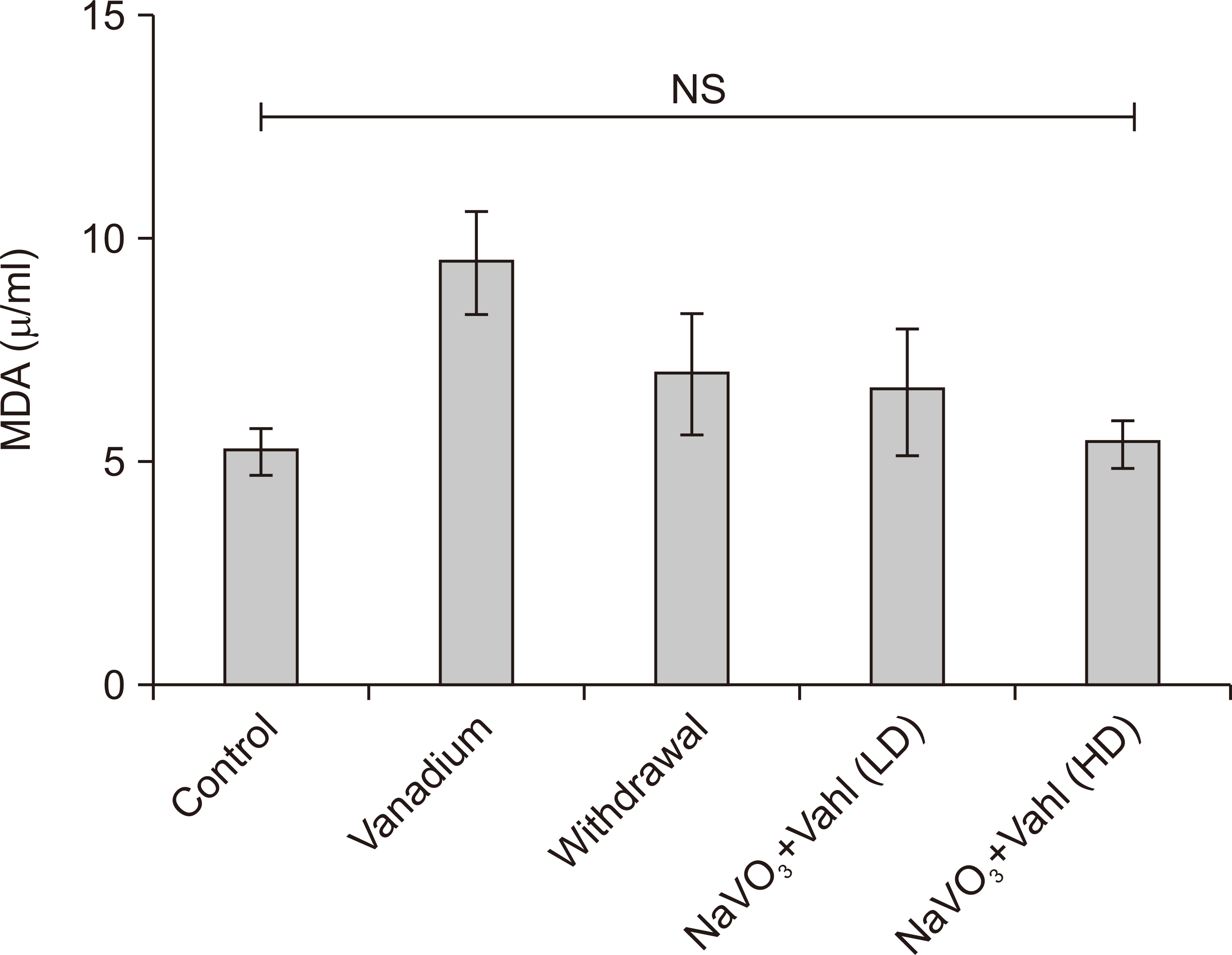
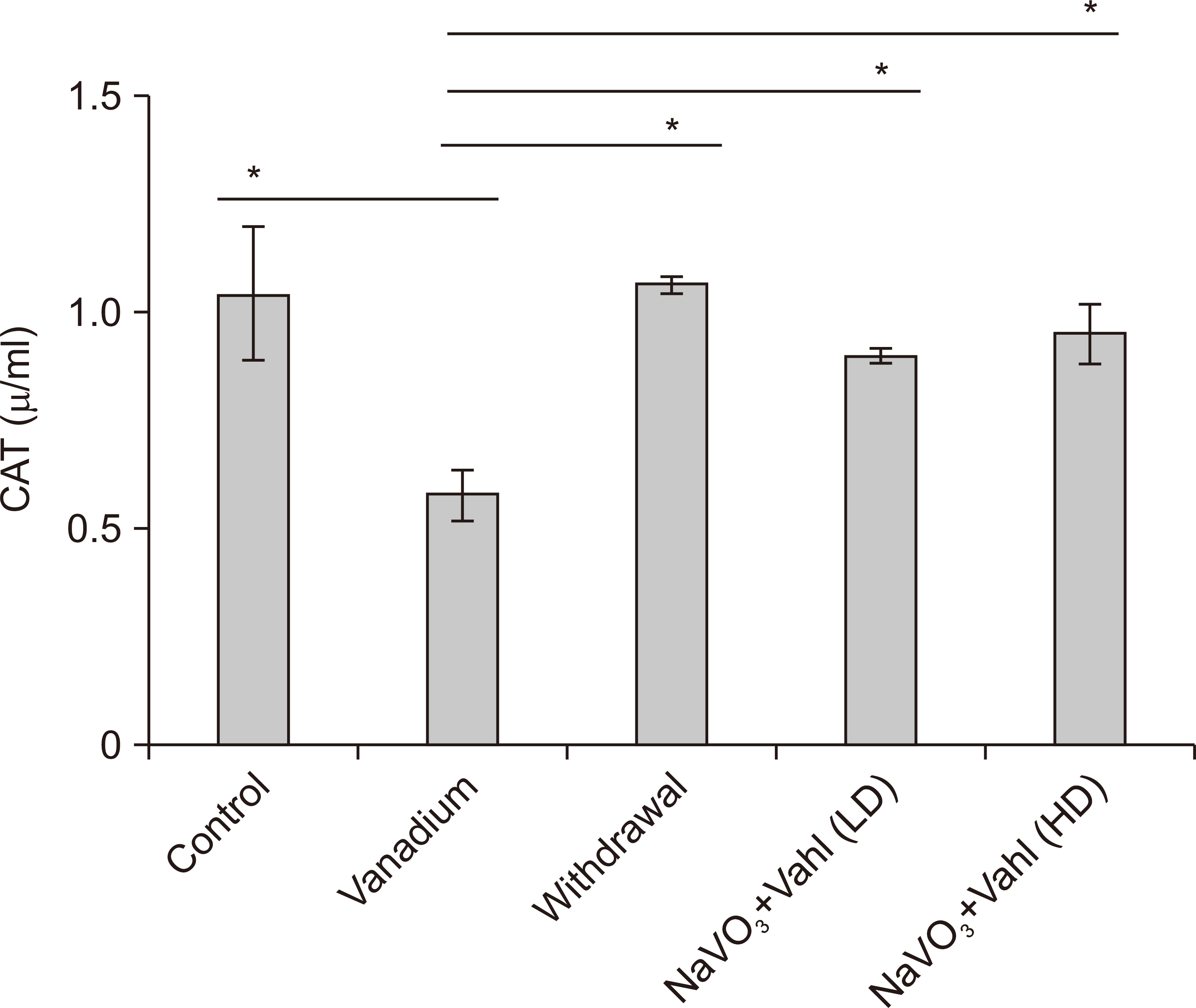
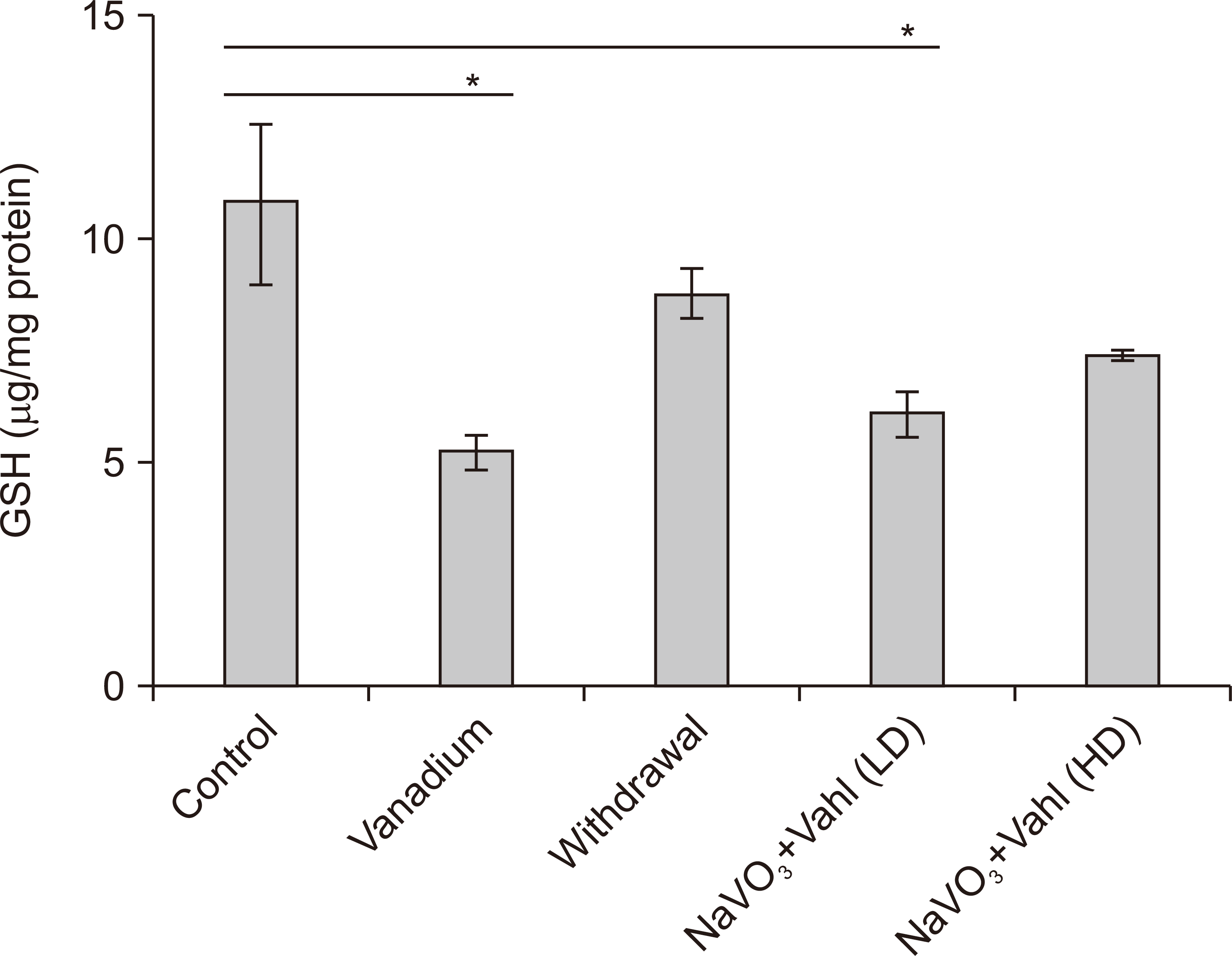
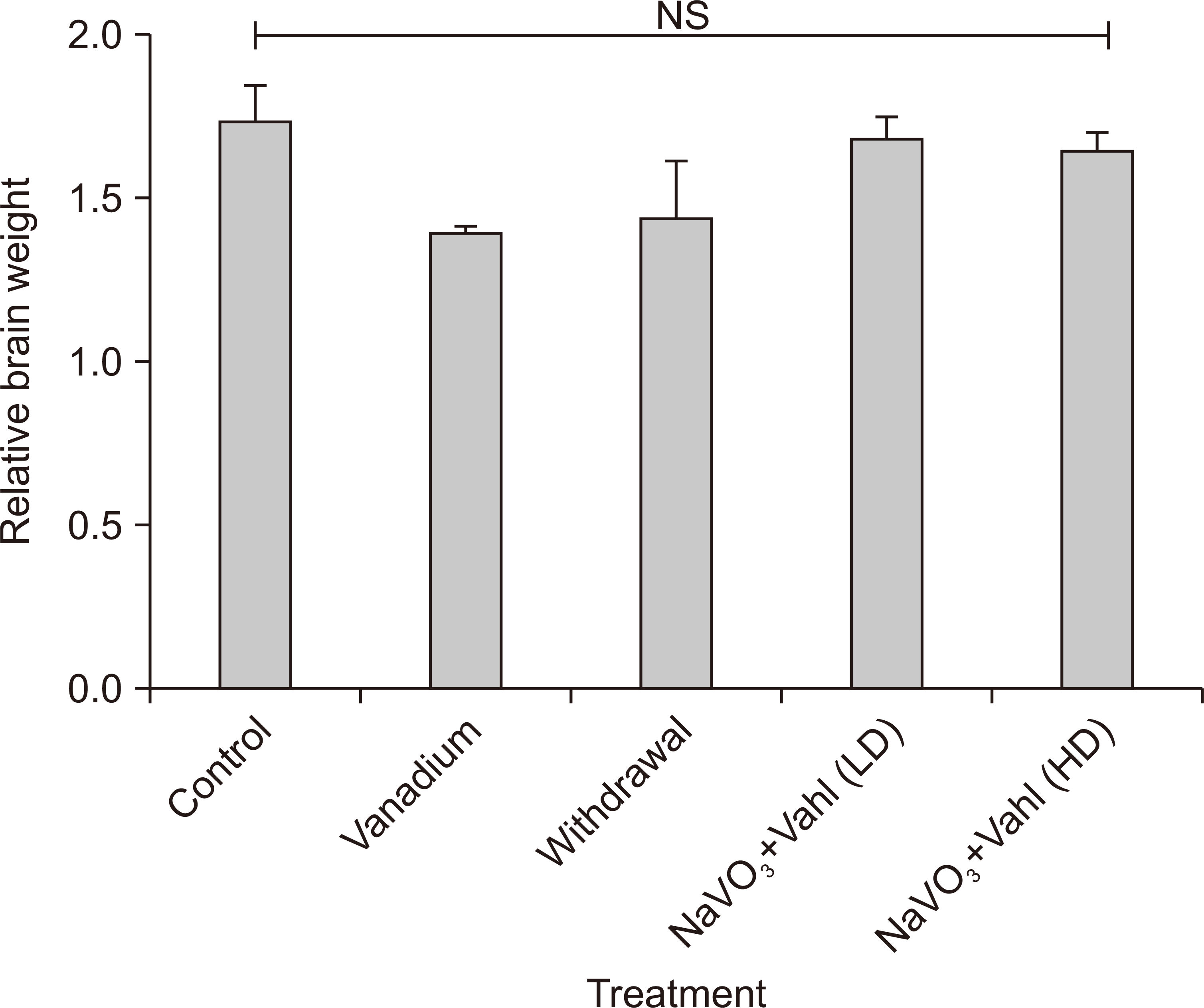
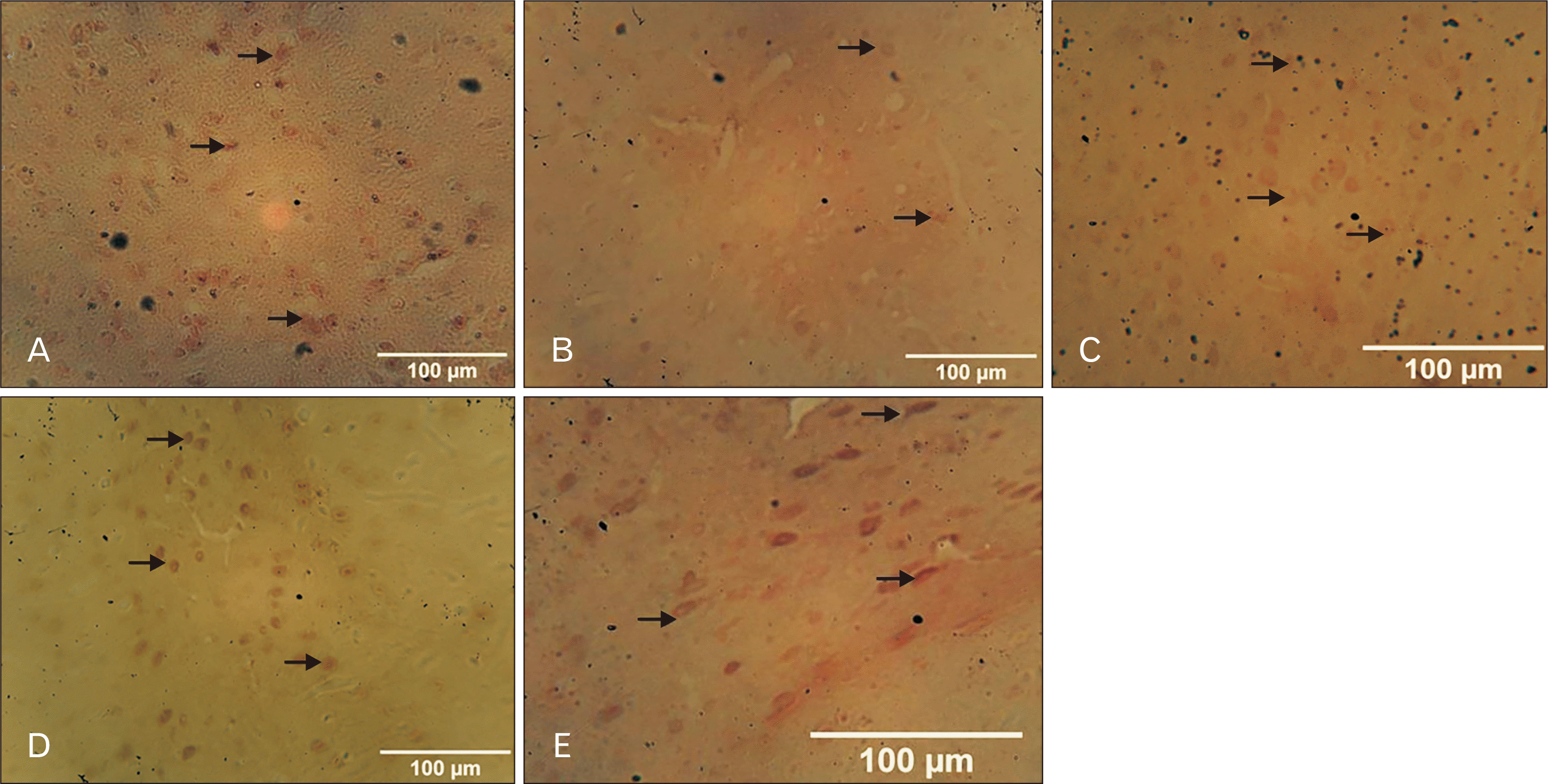
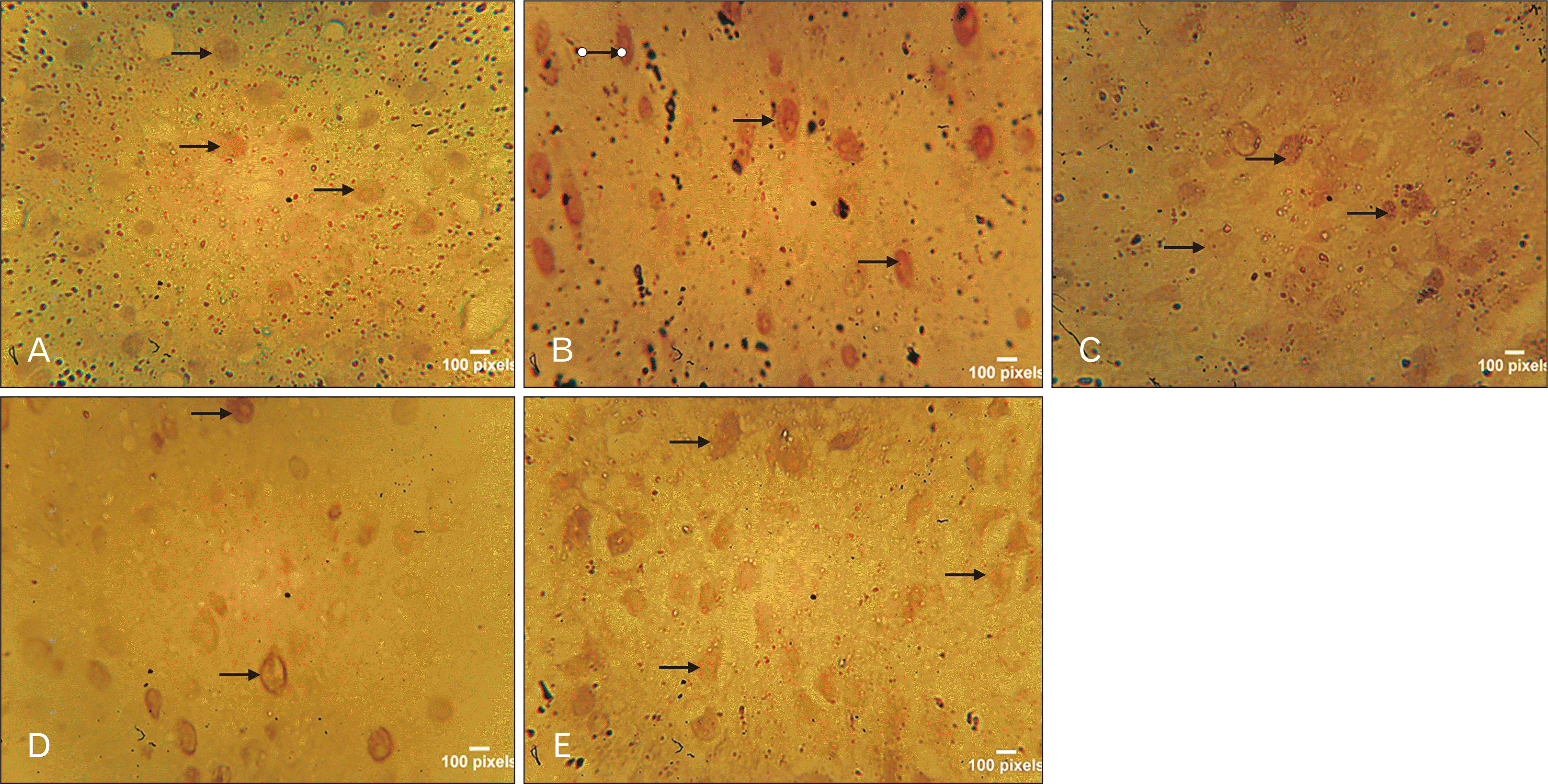
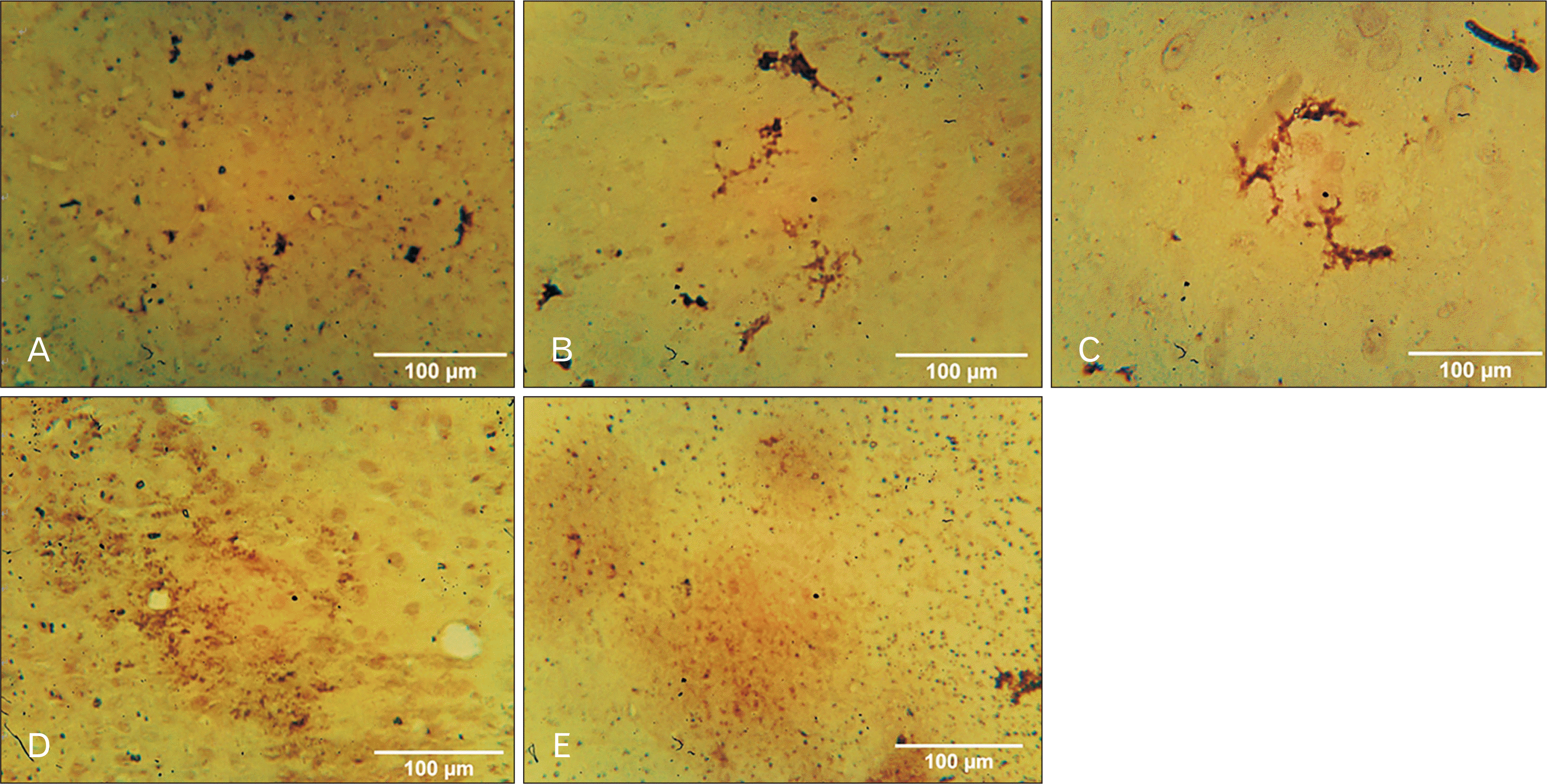




 PDF
PDF Citation
Citation Print
Print



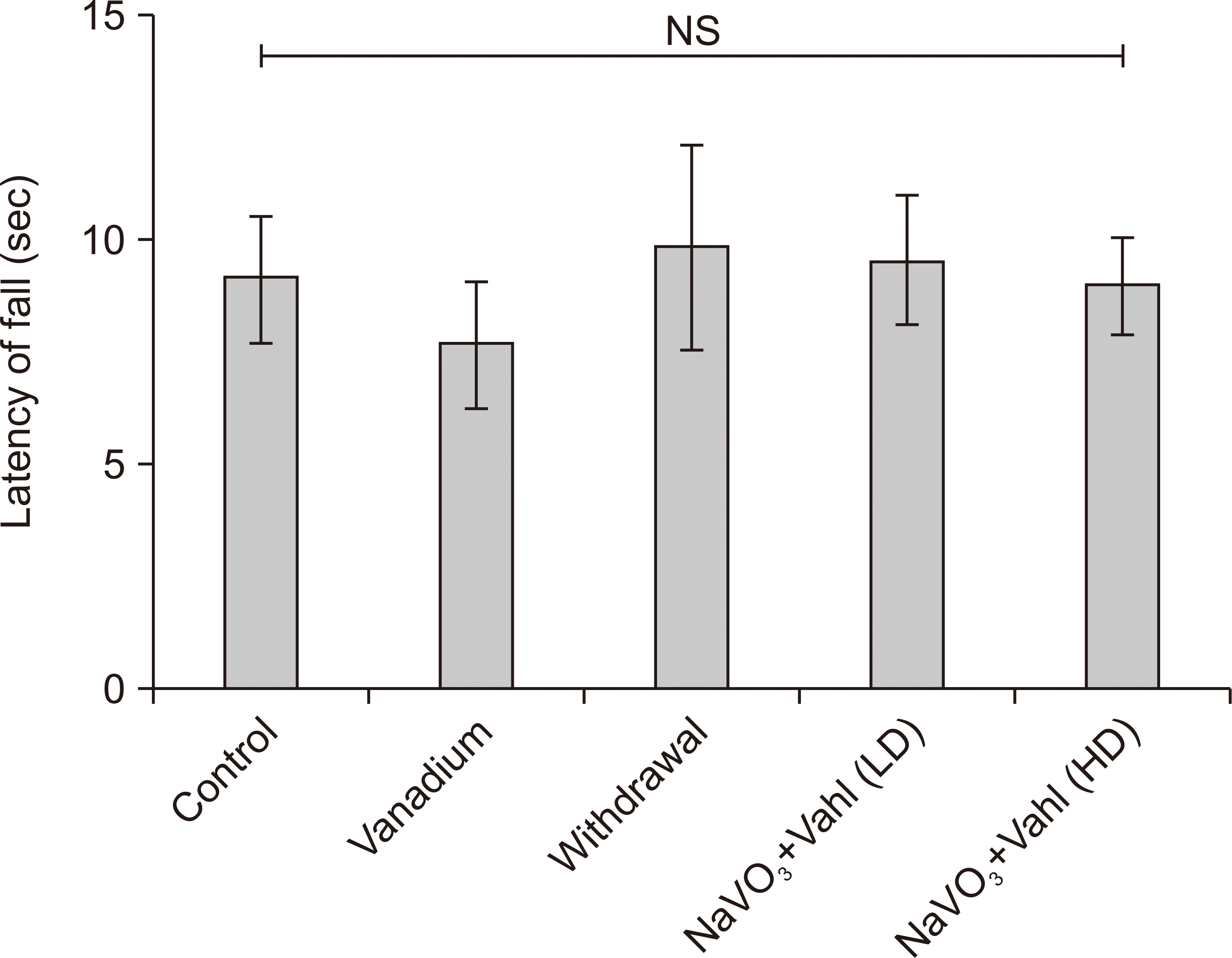
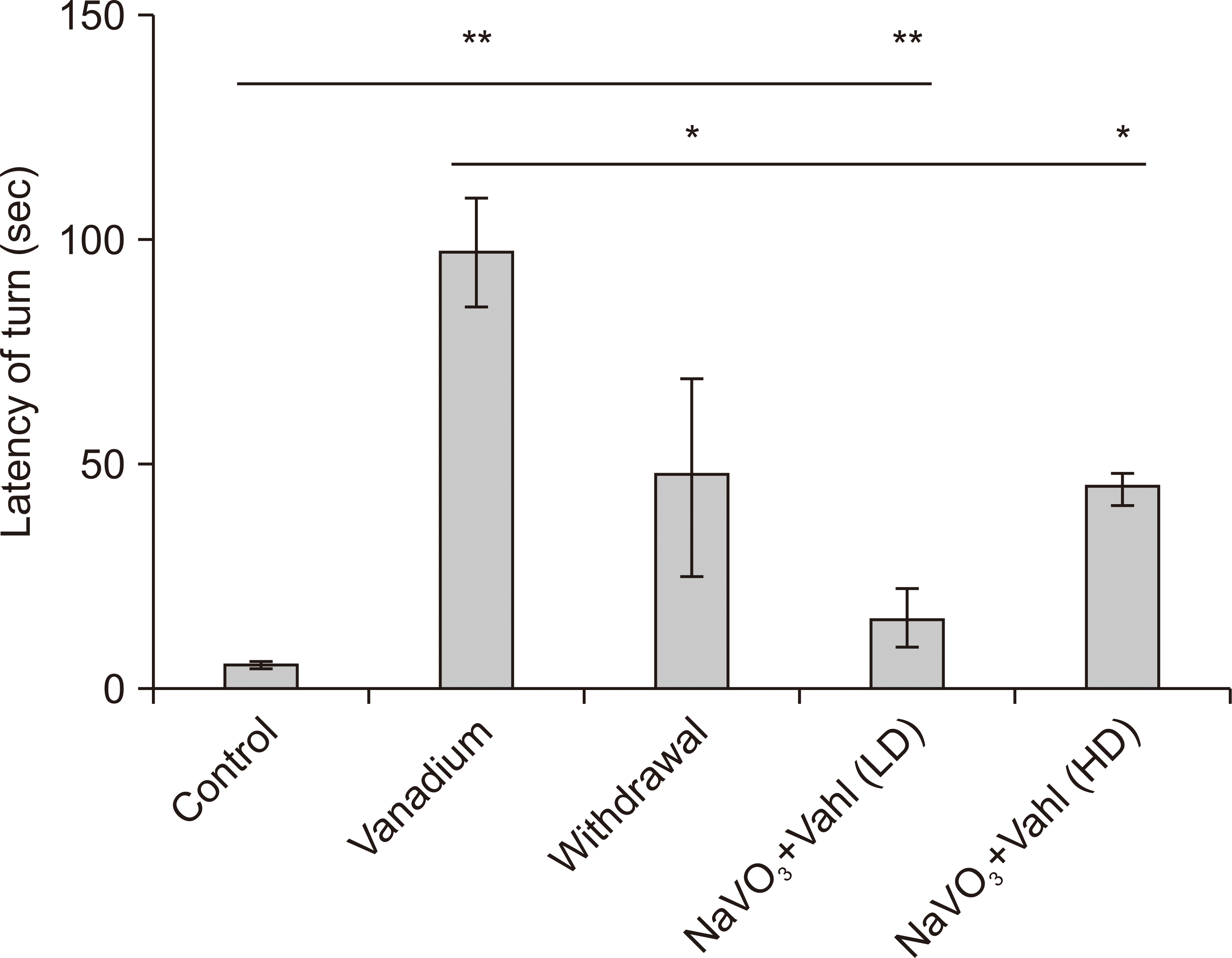
 XML Download
XML Download